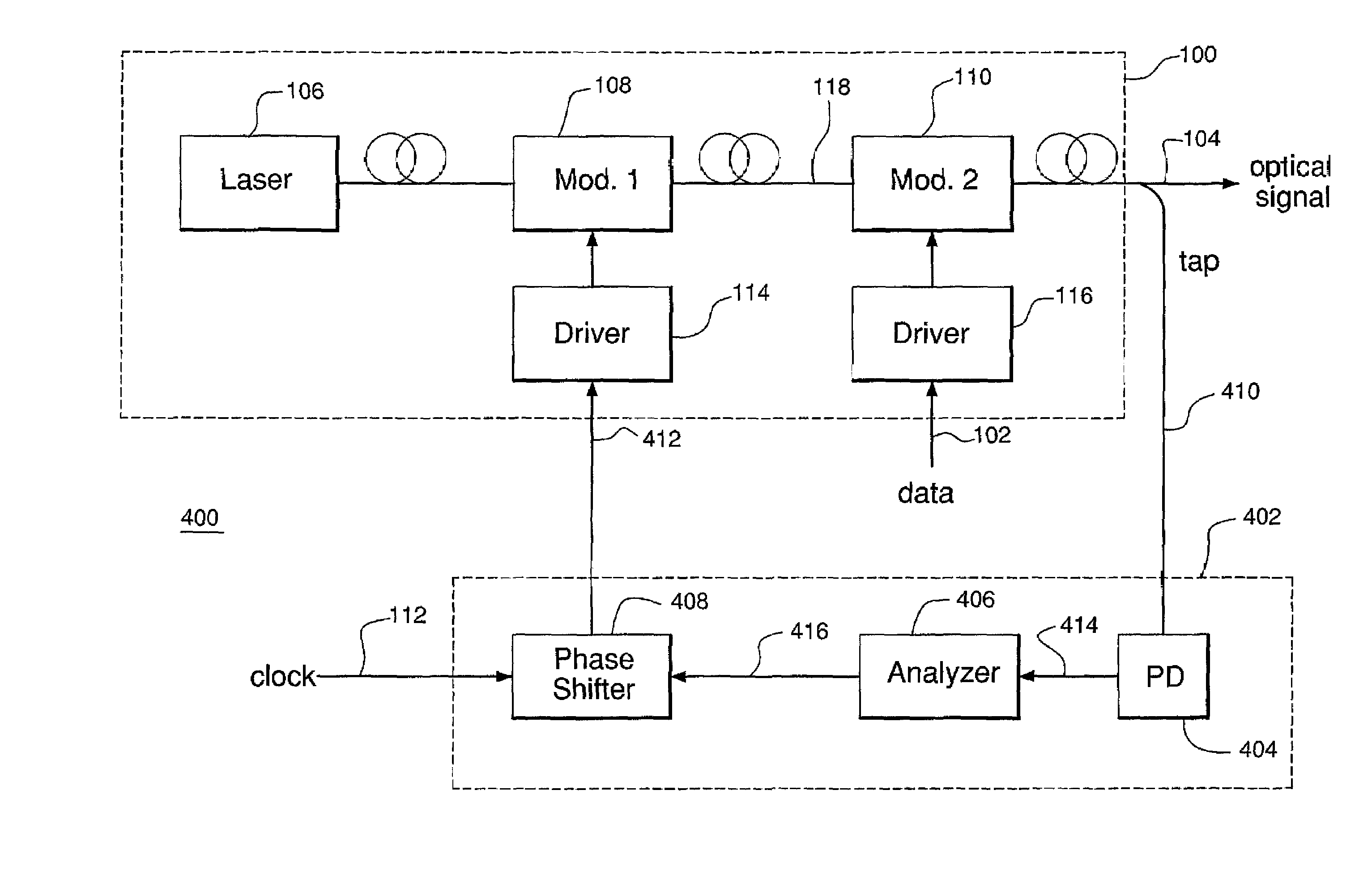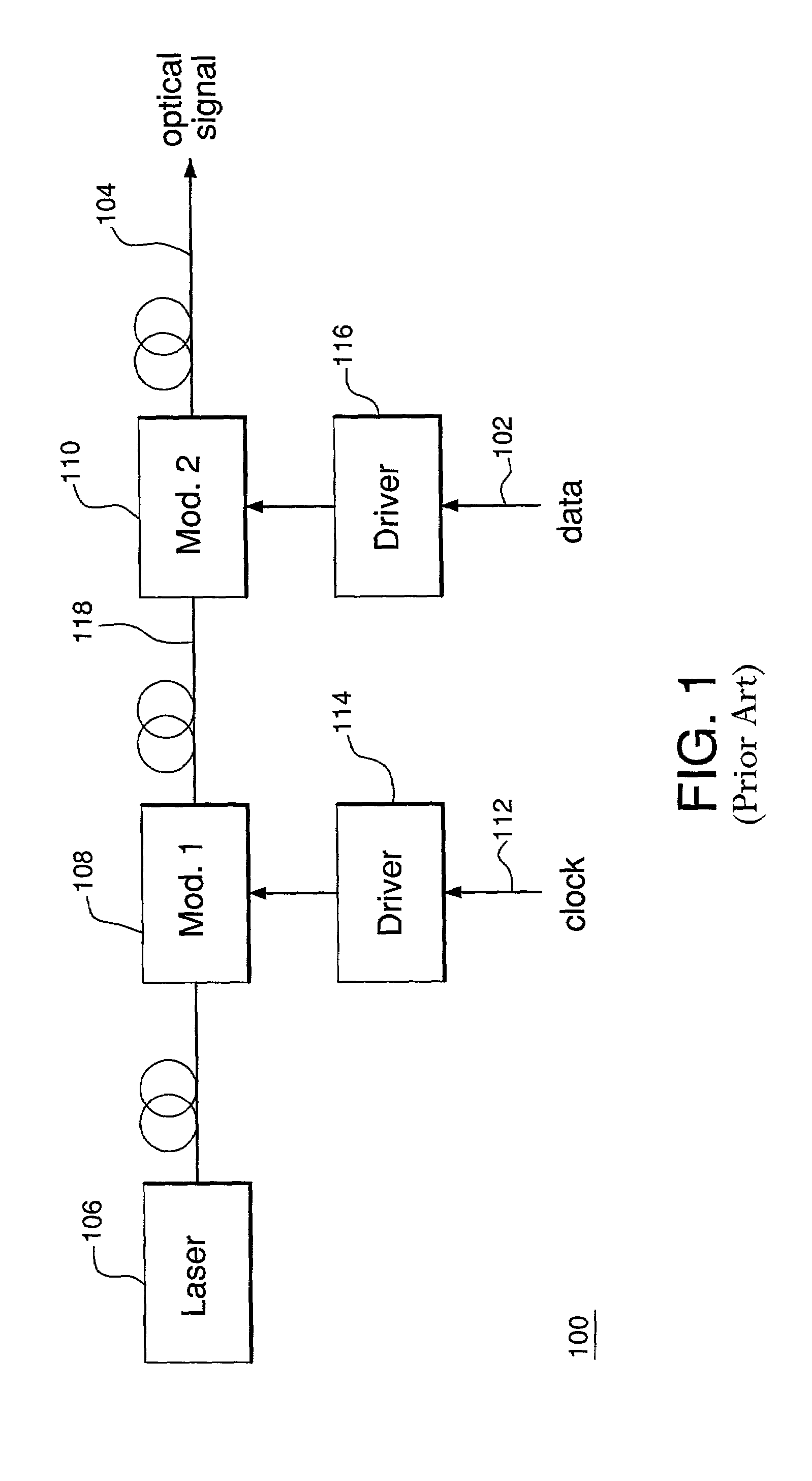Correcting misalignment between data and a carrier signal in transmitters
a transmitter and data technology, applied in the field of communication equipment, can solve the problems of distorted pulses not having the correct soliton waveform required, difficult to maintain synchronization, and poorly controlled phase drift, etc., and achieve the effect of reducing misalignmen
- Summary
- Abstract
- Description
- Claims
- Application Information
AI Technical Summary
Benefits of technology
Problems solved by technology
Method used
Image
Examples
Embodiment Construction
[0021]Reference herein to “one embodiment” or “an embodiment” means that a particular feature, structure, or characteristic described in connection with the embodiment can be included in at least one embodiment of the invention. The appearances of the phrase “in one embodiment” in various places in the specification are not necessarily all referring to the same embodiment, nor are separate or alternative embodiments mutually exclusive of other embodiments. Although the invention is particularly suitable for use with communications equipment, those skilled in the art can appreciate that the invention can be equally applied to other types of electrical and / or optical equipment.
[0022]Before embodiments of the present invention are described in detail, spectral properties of modulated optical signals, such as signal 104 of system 100, are briefly characterized.
[0023]FIGS. 3A and 3B show two representative spectra of a data-modulated optical signal produced using an optical pulse train o...
PUM
 Login to View More
Login to View More Abstract
Description
Claims
Application Information
 Login to View More
Login to View More - R&D
- Intellectual Property
- Life Sciences
- Materials
- Tech Scout
- Unparalleled Data Quality
- Higher Quality Content
- 60% Fewer Hallucinations
Browse by: Latest US Patents, China's latest patents, Technical Efficacy Thesaurus, Application Domain, Technology Topic, Popular Technical Reports.
© 2025 PatSnap. All rights reserved.Legal|Privacy policy|Modern Slavery Act Transparency Statement|Sitemap|About US| Contact US: help@patsnap.com



